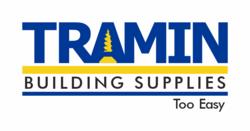Introduction
In the realm of construction and architecture, technological advancements have constantly pushed the boundaries of what is possible. One such innovation which has transformed the building industry is Laminated Veneer Lumber (LVL). This engineered wood range of products has gained significant traction in recent years due to its exceptional strength, versatility, and sustainability. In this blog, we will delve into the development of LVL and explore its advantages over traditional hardwood, shedding light on its transformative impact on modern construction practices.
The Birth of LVL
LVL originated as an answer to the limitations of traditional hardwood. As the demand for more sustainable and efficient construction materials grew, researchers and engineers sought ways to maximise the use of wood resources while minimising waste and exploitation of old-growth forests. LVL was introduced as a solution in the mid-20th century, utilising thin layers of wood veneer bonded together with adhesive to create a composite material with superior structural characteristics compared to natural hardwood which is also lighter and more sustainable.
Advantages over Hardwood
- Strength and Consistency: LVL is engineered to be incredibly strong and uniform in its properties. Unlike natural hardwood, which can vary greatly in strength and quality, LVL offers consistent performance across its entire length and width. This predictability allows for more precise calculations in design and reduces the need for over-engineering, resulting in cost savings and optimised structural integrity.
- Dimensional Stability: Natural hardwood is prone to warping, splitting and shrinking due to changes in moisture and temperature. LVL, on the other hand, is manufactured under controlled conditions, minimising these issues. This stability provides confidence in structures utilising LVL beams and reduces maintenance requirements over time.
- Long Spans: LVL's exceptional strength-to-weight ratio makes it ideal for long spans in various construction applications. This quality eliminates the need for excessive supports, enabling architects and engineers to design open and spacious interiors without compromising structural integrity.
- Sustainability: LVL is an environmentally friendly alternative to traditional hardwood. By utilising wood veneers from fast-growing and sustainably managed forests, LVL reduces the demand for old-growth trees.
- Design Flexibility: LVL can be manufactured to custom dimensions and shapes, allowing for intricate designs and complex architectural elements that may not be feasible with natural hardwood. Its versatility empowers architects to create innovative and aesthetically pleasing structures.
- Ease of Installation: LVL's consistent dimensions and lightweight nature make it easier to transport and handle on construction sites. Its uniformity simplifies installation and reduces the need for on-site adjustments, ultimately saving time and labour costs.
- Cost-Effective: While the initial cost of LVL may be higher than that of natural hardwood, its long-term benefits in terms of reduced maintenance, improved durability, being up to 30% lighter than the equivalent hardwood, and optimised construction processes often make it a more cost-effective choice over the life of a building.
Conclusion
Laminated Veneer Lumber (LVL) stands as a remarkable testament to the progress of modern construction materials. From its humble beginnings as an innovative solution to the limitations of hardwood, LVL has grown into a must-use product within the Australian construction industry. Its advantages, ranging from superior strength, lighter weight, dimensional stability, sustainability and design flexibility, position it as a one of the best innovations in engineered timber.
Tramin Building Supplies has a comprehensive range of LVL products to suit most building needs. Contact us for and check out our competitive pricing coupled with ease of ordering and efficient delivery process.
 Yes, We Do Shipping Deliveries
Yes, We Do Shipping Deliveries
